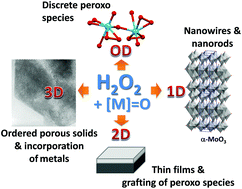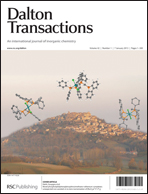Based on selected examples from the literature, this perspective aims to provide a short overview of synthetic methods using hydrogen peroxide and/or peroxidic species for the elaboration of discrete or zero-dimensional species, as well as mono-, bi- and tri-dimensional materials. There are several advantages in using peroxidic species: no foreign ion or organic ligand is introduced in the reaction medium, they are relatively cheap compared to costly alkoxides, for example, and in certain favorable cases these methods allow the selective formation of a given oxide polymorph. The materials prepared are used in several important technological applications such as electrochromism, gas sensing and electrochemistry but, in this review, special emphasis is placed on oxidation catalysis. Indeed, the deposition of peroxo species on or into oxide supports generally leads to catalytic materials that display higher activities related to a better dispersion of the active metal species in the host matrix. This review also focuses on the use of hydrogen peroxide for the recycling of toxic metal-containing spent materials such as those found in batteries for portable electronic devices.

You have access to this article
 Please wait while we load your content...
Something went wrong. Try again?
Please wait while we load your content...
Something went wrong. Try again?


 Please wait while we load your content...
Please wait while we load your content...